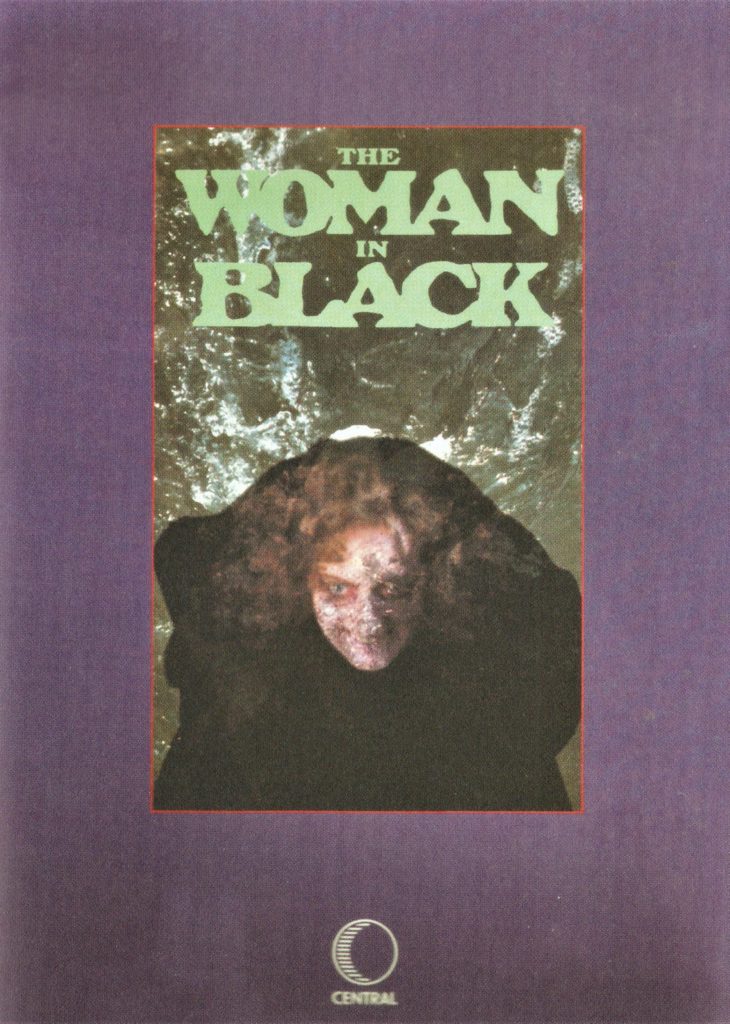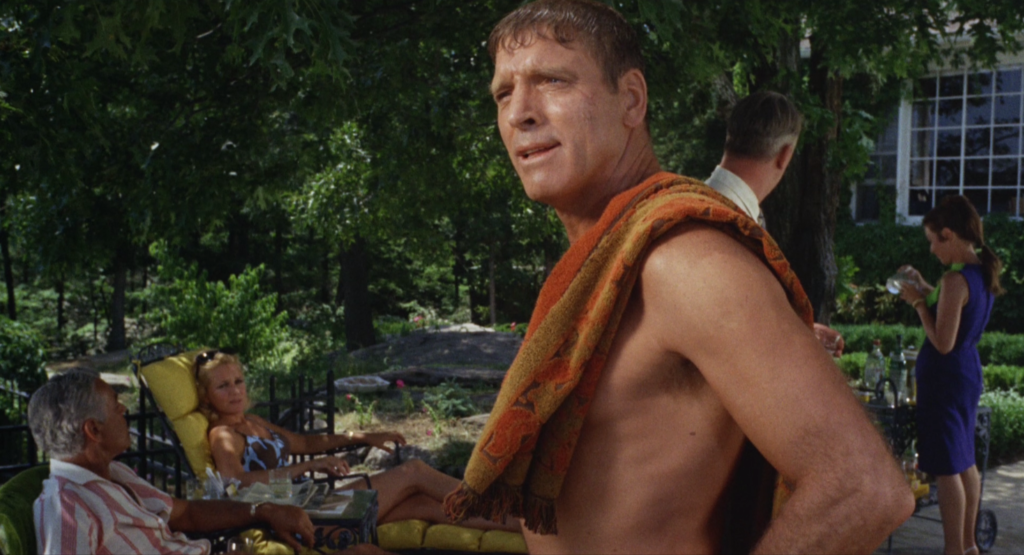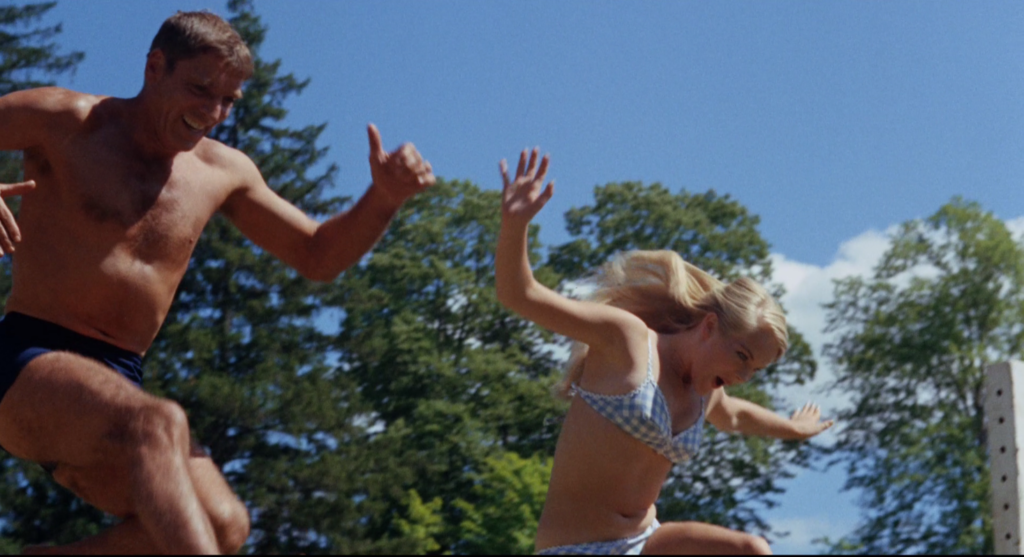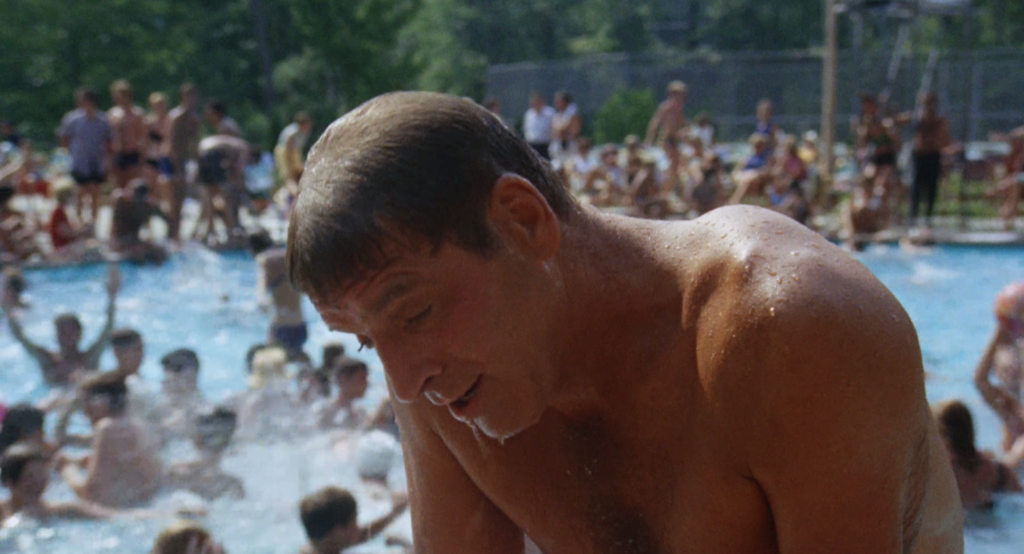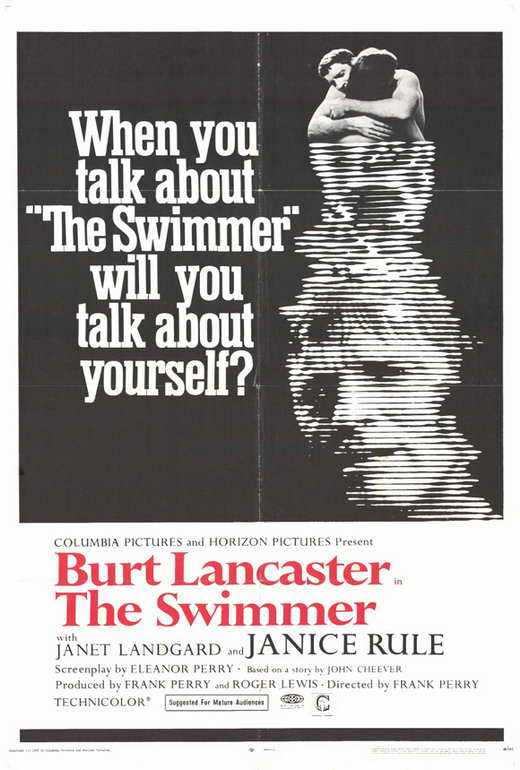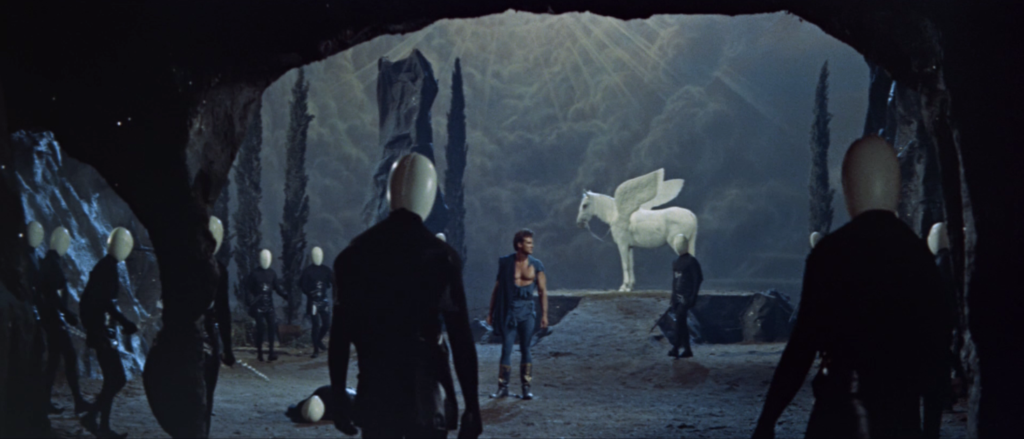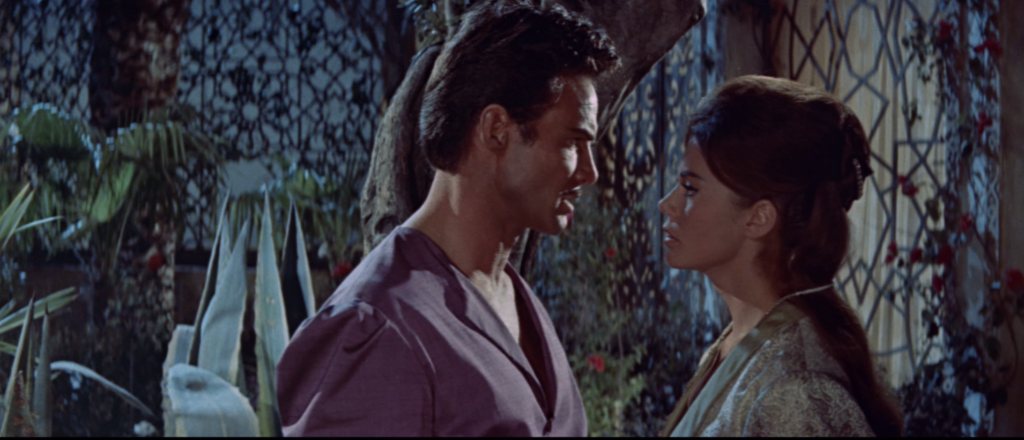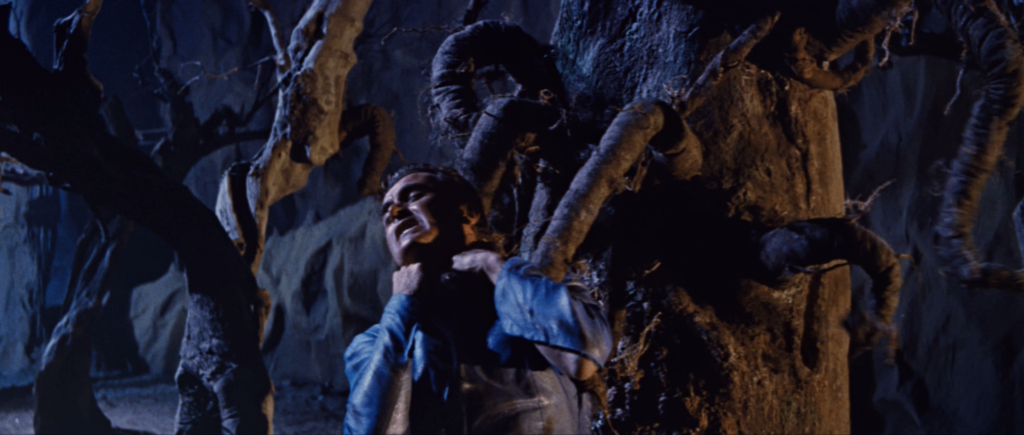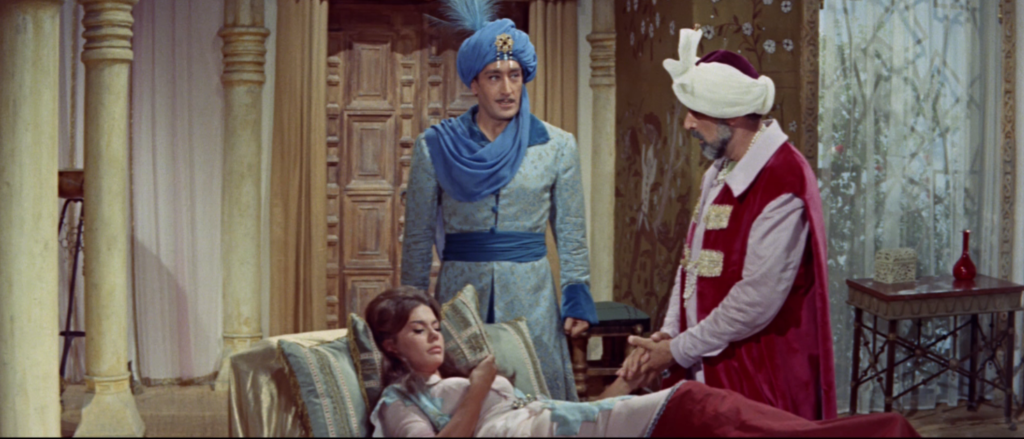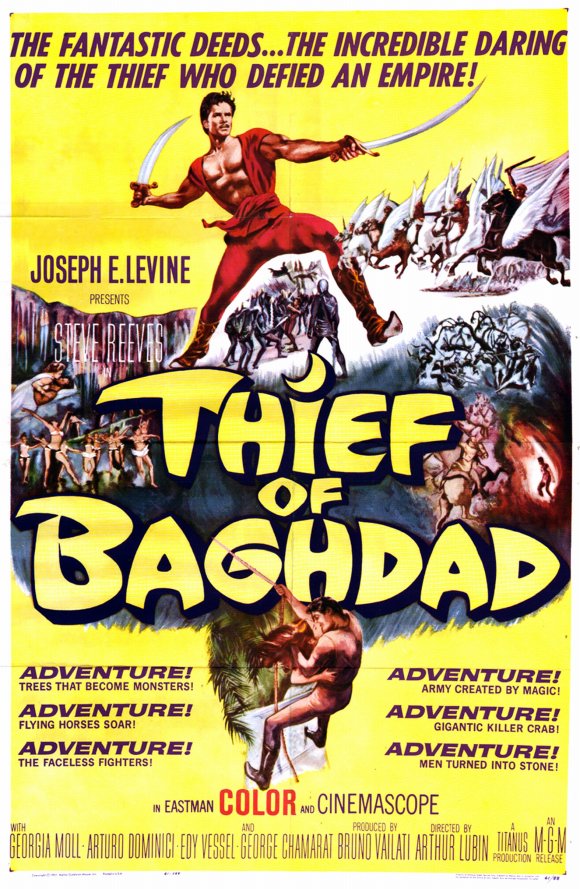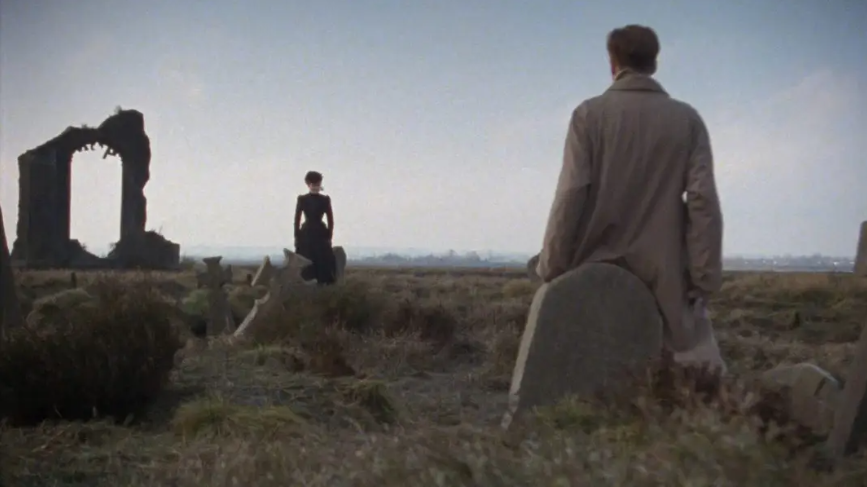 Television provides an intimacy that’s ideal for horror viewing, particularly horror of the quiet and unsettling kind. Watching that sort of film in an empty house, late at night and with the lights switched off, can be even more unnerving than a theatrical experience. TV horror, historically, has also been more accessible for younger viewers, who can experience such chills with or without their parents’ approval. But gone are the days when kids at the school cafeteria table would discuss with excitement a mildly creepy TV-movie that aired the night before. Horror still thrives on television, but the 20th century variety may only carry weight with viewers of a certain age: films and miniseries like Don’t Be Afraid of the Dark (1973), Trilogy of Terror (1975), Salem’s Lot (1979), Something is Out There (1988), and Stephen King’s “It” (1990), among countless others. With their modest budgets and the suspense always battling against frequent commercial interruptions, the results could be variable. Yet if you were young and impressionable, they may have been your gateway to the broader genre. The UK had their old gold rush of small-screen terror, among them Robin Redbreast (1970), The Stone Tape (1972), the BBC’s A Ghost Story for Christmas specials (1971-1978), and The Woman in Black, an adaptation of the Susan Hill novella which aired on ITV on the 24th of December 1989. I missed out on the original The Woman in Black; though it aired in the U.S. in the early 90’s, I don’t recall hearing of it at the time. Watching it now, available on disc for the first time in 20 years thanks to Network’s new restoration film on Blu-ray (it was originally shot in 16mm), I was surprised at just how much it got under my skin. I can only imagine what it would have been like to watch this as a child cowering under a blanket by a Christmas Eve fire in 1989 – commercials be damned.
Television provides an intimacy that’s ideal for horror viewing, particularly horror of the quiet and unsettling kind. Watching that sort of film in an empty house, late at night and with the lights switched off, can be even more unnerving than a theatrical experience. TV horror, historically, has also been more accessible for younger viewers, who can experience such chills with or without their parents’ approval. But gone are the days when kids at the school cafeteria table would discuss with excitement a mildly creepy TV-movie that aired the night before. Horror still thrives on television, but the 20th century variety may only carry weight with viewers of a certain age: films and miniseries like Don’t Be Afraid of the Dark (1973), Trilogy of Terror (1975), Salem’s Lot (1979), Something is Out There (1988), and Stephen King’s “It” (1990), among countless others. With their modest budgets and the suspense always battling against frequent commercial interruptions, the results could be variable. Yet if you were young and impressionable, they may have been your gateway to the broader genre. The UK had their old gold rush of small-screen terror, among them Robin Redbreast (1970), The Stone Tape (1972), the BBC’s A Ghost Story for Christmas specials (1971-1978), and The Woman in Black, an adaptation of the Susan Hill novella which aired on ITV on the 24th of December 1989. I missed out on the original The Woman in Black; though it aired in the U.S. in the early 90’s, I don’t recall hearing of it at the time. Watching it now, available on disc for the first time in 20 years thanks to Network’s new restoration film on Blu-ray (it was originally shot in 16mm), I was surprised at just how much it got under my skin. I can only imagine what it would have been like to watch this as a child cowering under a blanket by a Christmas Eve fire in 1989 – commercials be damned.
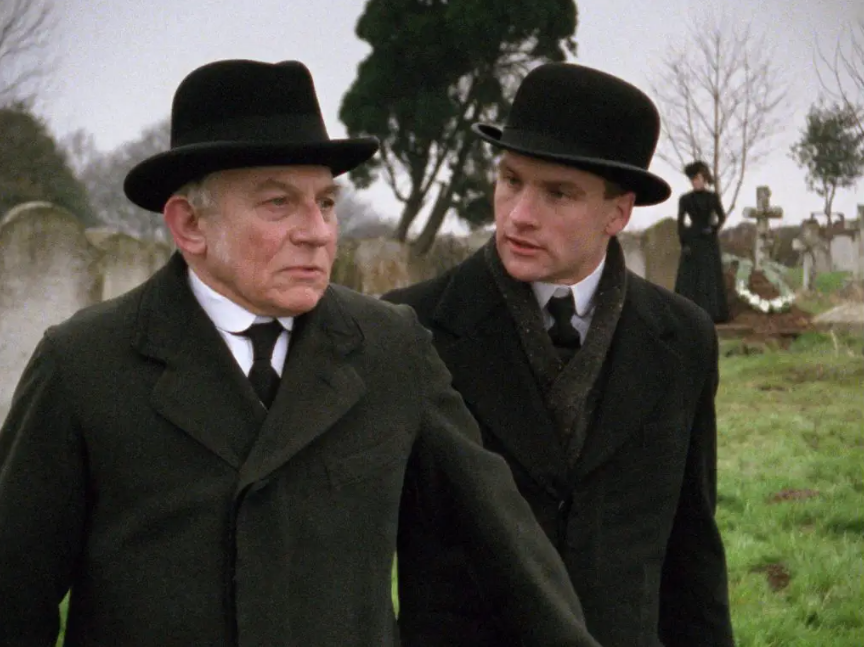
John Cater, Adrian Rawlins, and Pauline Moran as the Woman in Black
Better known these days is the 2012 film of the same title starring Daniel Radcliffe, released under the rejuvenated Hammer Films banner. That adaptation is quite good – and it was a big enough hit to earn a less-good sequel two years later (The Woman in Black 2: Angel of Death) – but having now seen the TV film, I prefer its quieter menace and mounting delirium, all (mostly) free of special effects. Adrian Rawlins (Breaking the Waves), with a strong Martin Freeman vibe, plays Arthur Kidd, a solicitor sent to the remote seaside town of Crythin Gifford to inventory the estate of its recently deceased owner, Alice Drablow. Mrs. Drablow had lived in the wonderfully named Eel Marsh House at the end of a snaking causeway which is overcome by the tide every evening, turning it into an island. Her funeral is sparsely attended, though he sees a sickly-looking woman dressed for mourning standing in the distance. When he asks about her, the locals are evasive. They’re a bigoted sort who keep to themselves, and Arthur can only assume it’s their hatred of the neighboring “gypsies” which prevents them from interfering when a young girl is almost crushed in the street – saved by him alone. But there’s something else going on, a local curse, which Arthur only begins to uncover when he sets up camp inside the Marsh House, his companion a dog named Spider loaned to him by his only ally, the sympathetic landowner Sam Toovey (Bernard Hepton, Get Carter). In the misty marshes he hears ghostly sounds carried from the past, and is pursued by the hateful glare of the Woman in Black.
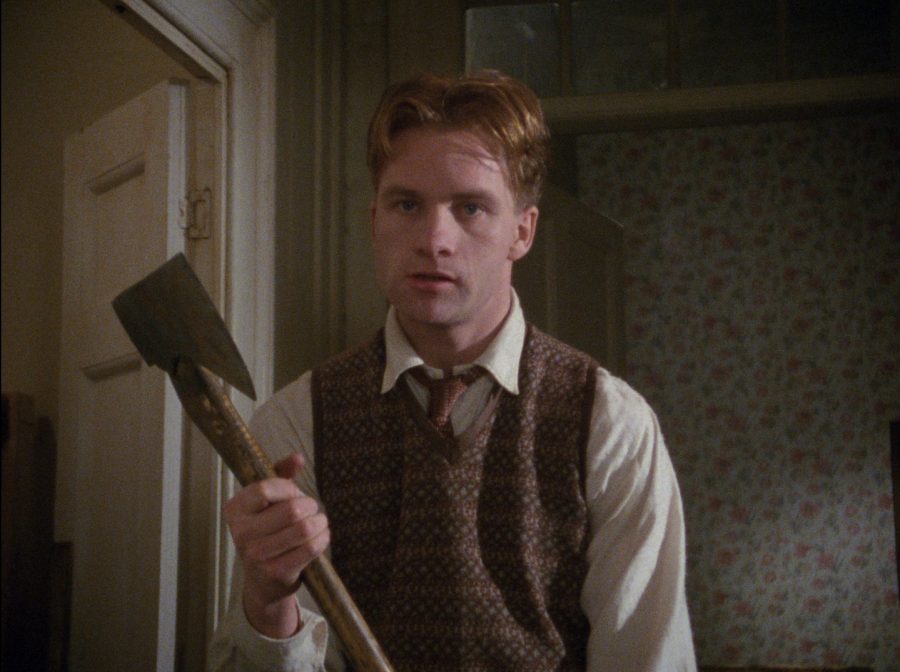
Arthur Kidd (Rawlins) tries to protect himself against the spirits of Marsh House.
Director Herbert Wise (I, Claudius) wrings maximum tension from the teleplay by the celebrated science fiction/horror writer Nigel Kneale (of the Quatermass serials, The Abominable Snowman, and The Stone Tape), letting the black figure materialize in the background at such intervals that the viewer is soon on constant look-out, defenses raised. The biggest scare arrives when she appears just when you don’t expect her, your attention drawn to something else when she leers straight into the camera, as if bending all her psychic will against the increasingly frail and fraught Arthur. An edge the original film has on the 2012 version is the impression that Arthur is beginning to go mad (those recurring sounds that only he can hear) and self-destructive (a desire to expel the curse with fire). One of Kneale’s innovations, a recorder in which Arthur listens to the audio diary of the late Mrs. Drablow – and begins to make recordings of his own – draws us further into the characters’ shared isolation and paranoia, but might have been exploited more. The climax, too, is somewhat underwhelming, despite an excellent final appearance for the malevolent spirit. Otherwise it’s hard to find fault with the film; best of all is the story’s handle on Arthur’s isolation from society, merely echoed by his stay in a haunted house. The hatred of the cursed townspeople is no indictment of rural society, because it’s just as sour from Arthur’s well-to-do but loathsome employer. This is a man who derides a client who won’t stop sniffing, ignoring Arthur’s explanation that the fellow was gassed in the War; he criticizes Arthur for marrying and having children at his young age; and by the tale’s end it’s revealed that he has his own, quite selfish reasons for sending him on this terrible assignment. Arthur seems to have the world against him, with his only connections to companionship – his wife and children; understanding Sam; the dog Spider – always delicately tethered from a distance and threatening to become lost, like that thin thread of causeway a hairsbreadth from the tide. It’s the curse of the Woman in Black, of course, that’s clouding his prospects of a happy future – but we get the sense that even without the ghost, he’s put at war with an unkind world for the simple crime of trying to help.
